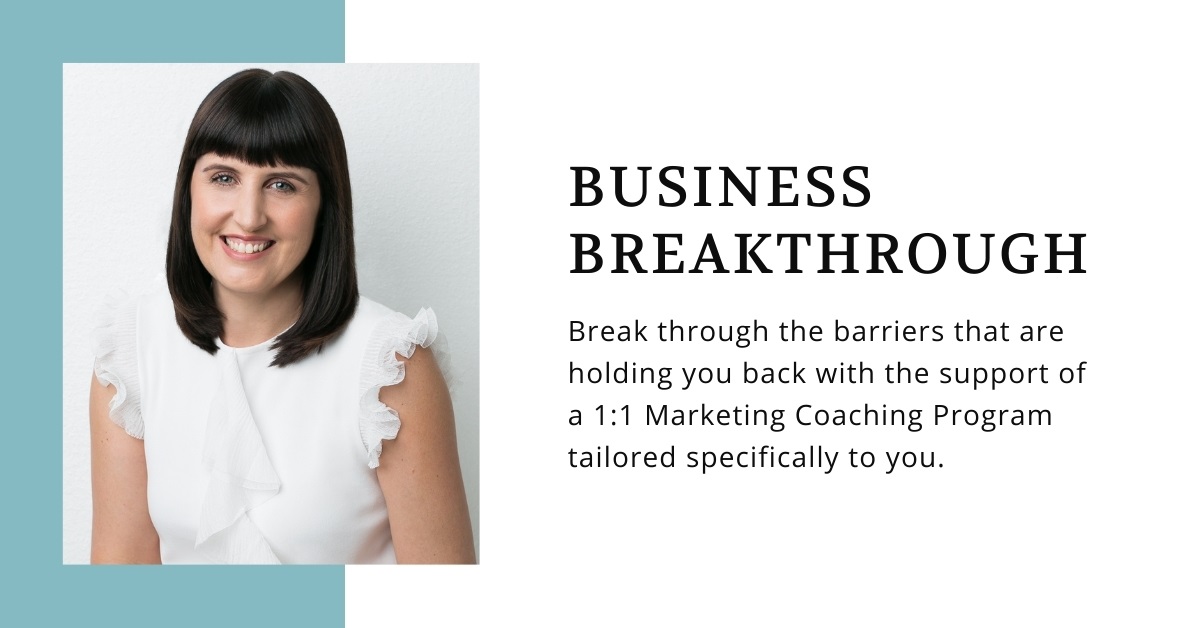The secret to attracting the right clients to your service business

Ever wonder why some people successfully attract the right clients to their service businesses?
And when I say right clients, I mean the type of clients who see value in your services, are a joy to work with, and pay you what you’re worth…
So, you can build a dream business that gives you the freedom and flexibility you’ve been searching for.
The secret to their success isn’t as complicated as you may think.
It simply comes down to the fact that they’ve discovered what they need to know and understand about their ideal clients, so they can successfully create and communicate the value in their service offerings.
Successful small business owners spend a lot of time and effort getting to know their ideal clients to understand what they value most.
They don’t skip over the critical task of conducting target market research.
And they’re open to receiving client feedback to gain an even greater insight into what their clients really want and need.

Now, if you’re working with the wrong clients or struggling to attract any clients at all…
I’m confident your biggest problem is that you don’t know your ideal clients well enough, yet.
So, where do you start?
And how exactly do you define and attract the right clients to your service business?
In the blog post below, you’ll find my top three tips for attracting your ideal clients, so you can start working with the right clients for your service business.
Once you’ve defined your ideal clients and understood what they seek from you, you’ll find it much easier to stand out, resonate and attract them to your business.
1. Define and describe your ideal clients
Before you can start researching your target market, you must have a clear definition of whom the right clients for your business are.
An excellent place to start is to imagine the type of person you would love to work with every day.
You may find it easier to do this by thinking about someone you have worked with in the past.
How would you describe who they are?
For example, are they small business owners, mothers, families, parents, or women, to name just a few?
Once you’ve got an idea of the type of client you would like to work with, write down some words you would use to describe them.
Start by brainstorming ideas around what they’re struggling with.
For example, are they time-poor? If so, you might also describe them as busy or active.
Another idea is to consider what they may want or desire.
For example, do they want to save time? If so, you might also describe them as wanting to be more productive or efficient.
If your list of adjectives is short and you’re stuck for ideas, use an online thesaurus to help you.
Now that you’ve got a list of descriptive terms, I want you to craft a definition that includes who your ideal client is, and what they are struggling with and want from you.
For example, I work with high-achieving professional women who want to move into a fulfilling job that allows them to spend more time with their families.

2. Research your ideal clients by speaking with them
The next step in getting to know your ideal clients is to speak directly with the type of people you’ve defined as your ideal clients.
Existing and past clients you have enjoyed working with are the first group you should aim to meet.
When speaking with them, you’ll want to ask questions to help you understand:
- What are their main struggles or pain points
- What do they value, want, and desire from working with you
- What positive and negative perceptions do they have about your services/industry
- What do they need to believe before they would be ready to buy
- What are their fears, and what’s holding them back
In addition, also think about where you could meet and speak with other people who match your ideal client definition.
Are there any upcoming events or networking opportunities you could participate in?
Or do you belong to any Facebook groups or communities where you could reach out?
The more people you speak with, the more information you’ll have to analyse and use when designing your services.
For more ideas on how to research your target market, check out my blog: 10 Simple ways to research your target market
3. Create and communicate the value of your services
My final tip is to use the market research information you gained from speaking to your ideal clients to create valuable service offerings.
And craft marketing messages that highlight this value in your offers.
To be clear, creating value doesn’t mean coming up with cheap offers or discounting your services.
Creating and providing value means a range of things, such as:
- Helping your clients achieve something they couldn’t do on their own
- Giving your clients clarity and direction so they can get unstuck and move forwards
- Discovering something new that your clients couldn’t see or find themselves
- Assisting your clients to get to where they want to be faster
- Guiding your clients, so they avoid making costly or timely mistakes
So, think about what services you could create that your ideal clients would highly value.
And in your service description, describe this value so that your ideal clients will clearly understand how you can help them get the desired results.
RELATED: 15 Things you must have to create an irresistible service offering
Once you understand who your ideal clients are, what they are looking for from you, and the value they are willing to buy, you’ll be well on your way to attracting the right clients for your service business.
Tired of trying to figure out what you’re missing when it comes to finding clients and making sales in your service business?
Break through the barriers that are holding you back with the support of an MBA-qualified Marketing Coach and Business Mentor who will tailor a 1:1 program specifically for you.

BUSINESS BREAKTHROUGH is a 3 or 6-month 1:1 Coaching Program for service-based business owners who want to develop the strategy, systems, and structure they need to find clients and make sales, so they can stop feeling stuck and start gaining massive momentum in their business.
Did you find this post helpful? Don’t forget to PIN to Pinterest and share on Facebook.



